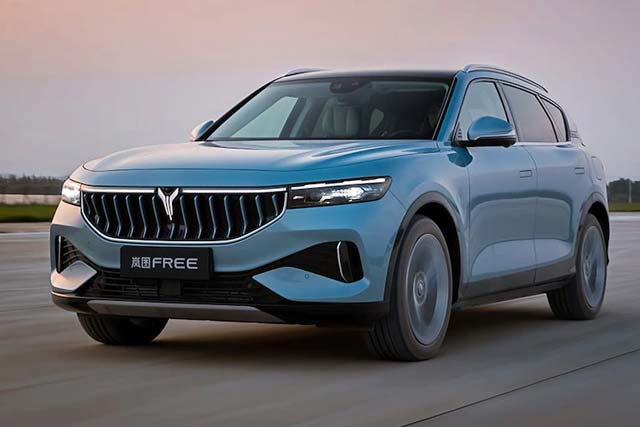Chinese EV Brands in Norway: Competitive Growth Insights

Chinese EV brands in Norway have made a remarkable impact on the market, positioning themselves as significant players in the world’s leading electric vehicle hub. Since the arrival of the first MG model in January 2020, these brands have collectively captured around 10% of the Norway EV market, showcasing their competitive edge. The absence of tariffs on imports of Chinese electric vehicles has further facilitated this growth, enhancing their attractiveness against established brands like Tesla. As Norwegian consumers embrace the latest offerings from companies such as BYD and XPeng, the competition heats up in an already dynamic EV landscape. With advancements in technology and attractive pricing, Chinese brands are undeniably reshaping the European car market in favor of electric mobility.
The rise of Chinese electric vehicle manufacturers in Norway illustrates a larger trend within the automotive sector, where these brands are increasingly recognized as formidable competitors. Following the initial launch of Chinese models, consumer acceptance has grown, positioning these vehicles as viable alternatives to traditional European and U.S. brands. In this rapidly evolving EV competition in Norway, established players like Tesla face mounting pressure to innovate and adapt. As the landscape shifts towards more affordable and technologically advanced electric vehicles, the presence of Chinese companies is a hallmark of this transformation. By redefining expectations in the European car market, they not only challenge the status quo but also contribute significantly to Norway’s status as a global leader in electric vehicle adoption.
The Rise of Chinese EV Brands in Norway
China has rapidly become a dominant force in Norway’s electric vehicle (EV) market, achieving an impressive market share of around 10 percent since 2020. This ascent can be attributed to Norway’s favorable import policies, which do not impose tariffs on Chinese EVs, setting it apart from other countries that have taken protective measures against foreign competition. Norwegian consumers have begun to embrace a variety of Chinese brands, including MG, NIO, and BYD, which offer advanced technology and competitive pricing. This change in perception has revolutionized the EV market in Norway, where electric vehicle adoption is already at an exceptional rate.
The competitive edge of Chinese EV brands is further enhanced by their focus on innovation and affordability. For instance, industry experts highlight that numerous Chinese models are being well-received due to their advanced technological features and value propositions. Christina Bu, secretary general of the Norwegian EV Association, noted that at least 20 different Chinese EV models are actively sold in Norway, indicating a vast availability that empowers consumers. As buyers increasingly recognize the quality and competitiveness of these vehicles, the landscape of the Norwegian EV market continues to evolve, posing a formidable challenge to established brands like Tesla.
Competitive Landscape: Tesla vs. Chinese EVs
The competition in Norway’s EV market is intensifying, particularly between Tesla and emerging Chinese brands. Tesla remains the leading player, largely thanks to its popular Model Y, yet the growing appeal of Chinese electric vehicles offers a significant counterweight. Analysts note that while Tesla benefits from strong brand loyalty and cutting-edge technology, Chinese manufacturers are making substantial strides by providing affordable alternatives with impressive specifications. As consumer preferences gradually shift, traditional powerhouses must innovate and adapt to maintain their market positions.
Moreover, the evolution of consumer attitudes towards EVs is crucial in shaping the competitive dynamics. A recent study indicated that European drivers, including Norwegians, are increasingly open to purchasing Chinese EVs, a trend that automobile manufacturers cannot overlook. This burgeoning acceptance signifies a challenging landscape for Tesla as more consumers seek out vehicles that not only suit their lifestyles but also deliver great value. As more Chinese EV brands enter the market and refine their offerings, Tesla will need to reconsider its strategies to retain its edge in this rapidly changing arena.
Norway as Europe’s EV Testing Ground
Norway has often been described as a laboratory for electric vehicles due to its unique landscape for EV adoption and competition. Its combination of high wealth, government incentives, and a strong focus on sustainability creates a favorable environment for brands to test their products. This has made Norway an attractive entry point for Chinese EV manufacturers looking to establish themselves in Europe. Observers like Felipe Munoz from JATO Dynamics emphasize that the ease of entering the Norwegian market without significant investments provides Chinese brands an opportunity to build their reputations before expanding further into Europe.
Moreover, the lack of a strong domestic automotive industry in Norway means that international brands face less resistance when introducing innovative models. This distinct market dynamic has allowed Chinese manufacturers to capture significant market share and cater to the evolving demands of Norwegian consumers. As the market matures, Norway will continue to play a pivotal role in shaping EV trends across the continent, influencing consumer preferences and pushing established brands to keep pace with new entrants.
The Competitive Edge of Chinese EV Technology
One of the most striking advantages Chinese EV brands have in Norway is their commitment to advanced technology. This commitment is evident in the features they offer, such as superior battery technology, expanded range, and innovative connectivity solutions. Norwegian consumers, known for their affinity for high-performance electric vehicles, are increasingly opting for Chinese models, which are perceived as technologically advanced and competitively priced. Brands like BYD and XPeng are making significant headway by not only appealing to tech-savvy buyers but also providing comprehensive service offerings that enhance user experience.
Furthermore, the technological advancements presented by these Chinese brands reinforce their position in the market as viable alternatives to traditional players like Tesla. As electric vehicle technology continues to evolve, it is evident that manufacturers will need to prioritize research and development to stay relevant. The influx of Chinese EVs adds pressure to other automotive companies to enhance their offerings and innovate continually. Such competition is beneficial for consumers, driving down prices and improving the overall quality of EVs available, while pushing the envelope of what is possible in electric mobility.
Impact of Tariff Policies on EV Market Dynamics
Norway’s decision to refrain from imposing tariffs on Chinese electric vehicles has had significant implications for the dynamics of its EV market. By positioning itself as a welcoming environment for Chinese imports, Norway has facilitated unprecedented growth in the market share of these brands. This lack of tariffs contrasts sharply with the situations in the U.S. and the European Union, where protective measures are in place to bolster local manufacturers. Observers argue that such thoughtful policy decisions contribute to Norway’s reputation as a leading contender in the global electric vehicle arena.
The strategic choice to keep tariffs away enables a diverse range of vehicles to compete in the Norwegian market, thus enhancing consumer choice and driving competition. It has attracted a myriad of new players, allowing many consumers to access a larger selection of electric vehicles. As a result, Norwegian drivers now enjoy not only a wider array of Chinese EV options but also the attendant benefits of competitive pricing and technology advancements. As this dynamic continues to unfold, it remains essential for the Norwegian policy framework to adapt and address the changes brought about by these developments.
Shifting Perceptions of Chinese EV Manufacturers
There has been a notable shift in perceptions among Norwegian consumers regarding Chinese EV manufacturers. Initially viewed with skepticism, these brands are now recognized for their quality, innovation, and competitive pricing. Organizations such as the Norwegian EV Association highlight that the earlier biases are giving way to a more informed consumer base that appreciates technological advancements across the board. With over 20 Chinese models available in Norway, consumers are excited to explore various options, paving the way for a more diverse automotive landscape.
Evidently, this change in perception correlates with the overall growth of the EV market in Norway, wherein consumers prioritize efficacy, technology, and sustainability. The evolution signifies that Chinese brands are no longer just competitors; they are becoming key players in shaping the future of electric mobility. As Norwegian drivers continue to embrace diversity in EV offerings, it underscores the growing need for all manufacturers, including established firms, to innovate while meeting the changing demands of the market.
Future Prospects for Chinese EVs in Europe
The future prospects for Chinese EV brands in Europe, and specifically in Norway, appear promising considering the current trends and consumer behavior. As China continues to push forward in EV innovation and manufacturing efficiencies, European markets are gaining access to increasingly sophisticated and affordable electric vehicles. This scenario poses significant challenges for established brands like Tesla and European manufacturers, as they compete with not only price but also enhanced technology and service offerings.
Several analysts express optimism regarding the potential for Chinese EVs to take a more substantial hold in Europe in the coming years. The growing demand for electric vehicles, coupled with favorable regulatory environments in specific countries, paves the way for expanded market share among Chinese manufacturers. As these brands increase their investment in marketing and distribution channels, their visibility across European markets is likely to grow, helping them solidify a strong identity in a rapidly evolving automotive landscape. This trend suggests that the competition will continue to escalate, benefiting consumers and leading to a richer market diverse with options.
The Role of Consumer Awareness in EV Choices
Consumer awareness is playing a pivotal role in shaping the choices made by buyers in Norway’s electric vehicle market. With growing knowledge about the sustainability benefits, cost-effectiveness, and latest technologies, consumers are more empowered than ever to make informed decisions. This shift is evident in the increasing popularity of Chinese electric vehicles. As Norwegian buyers, often well-researched and environmentally conscious, explore their options, they are discovering the unique advantages offered by Chinese brands.
Moreover, as organizations like the Norwegian EV Association actively promote awareness about EVs and sustainability, consumers are more likely to consider brands that might have previously been overlooked. Elevated consumer awareness not only drives demand for well-established brands like Tesla but also creates conducive ground for emerging players. The more that consumers understand about the range of available technology and pricing, the better they can appreciate the competitive landscape. This heightened awareness ultimately fosters a vibrant market where innovation and value become top priorities, benefiting all stakeholders.
Conclusion: The Future of EV Competition in Norway and Beyond
In conclusion, the future of electric vehicle competition in Norway is not only bright but indicative of wider trends likely to unfold across Europe. As Chinese brands gain traction, the competitive landscape is evolving, presenting challenges and opportunities for established players like Tesla. The dynamic shift in consumer preferences, supported by favorable policies and growing brand recognition, is creating a robust ecosystem for electric vehicles in Norway and throughout Europe.
Adapting to this landscape will require innovation from all automotive manufacturers, as consumer demand for diverse and affordable electric vehicles rises. As China continues to lead with advanced technology and competitive pricing, the European EV market will have to respond effectively or risk being outpaced. With Norway as a leading example, the evolution of the electric vehicle market signifies a notable shift in how consumers will approach their EV choices, setting the stage for a future enriched by competition, sustainability, and innovation.
Frequently Asked Questions
What impact do Chinese EV brands have on the Norway EV market?
Chinese EV brands have significantly impacted the Norway EV market, capturing approximately 10% of the total vehicle sales. Their competitive pricing and advanced technology have driven their rapid growth, particularly since Norway does not impose tariffs on Chinese EV imports, making it easier for these brands to establish a foothold.
Which Chinese electric vehicles are popular in Norway?
Popular Chinese electric vehicles in Norway include models from brands such as BYD, XPeng, and MG. These brands have ranked among the top-selling vehicles in Norway, reflecting a growing acceptance and market share of Chinese EVs among Norwegian consumers.
How do Chinese EV brands compete with Tesla in Norway?
Chinese EV brands compete with Tesla in Norway by offering advanced technology at more competitive prices. While Tesla remains the dominant player, the growing presence of Chinese brands is challenging Tesla’s market position as they introduce affordable EV options that appeal to a broader audience.
What are the advantages of Chinese electric vehicles in the European car market?
Chinese electric vehicles provide several advantages in the European car market, including competitive pricing, advanced technology, and a wide variety of models. This makes them appealing to consumers seeking cost-effective and innovative solutions, particularly in markets like Norway where EV adoption is high.
Are Chinese EVs perceived positively in Norway?
Yes, the perception of Chinese EVs in Norway has improved significantly. Norwegian consumers increasingly view them as good quality vehicles with advanced technology, making them a competitive option in the country’s saturated EV market.
How has the absence of tariffs affected Chinese EV imports in Norway?
Norway’s absence of tariffs on Chinese EV imports has greatly facilitated the entry of these vehicles into the market. This policy, which distinguishes Norway from the EU and the U.S., allows Chinese brands to offer competitive prices without the burden of additional duties, contributing to their market share growth.
What role does Norway play in the European expansion of Chinese EV brands?
Norway serves as a crucial testing ground for Chinese EV brands entering the European market. Its high EV adoption rates, favorable policies, and lack of a domestic automotive industry make it an ideal environment for new brands to gain traction before expanding into larger European markets.
How many Chinese EV models are available in Norway?
Currently, there are at least 20 different Chinese EV models available in the Norwegian market, showcasing the diversity and growing presence of these brands in a country that is rapidly adopting electric vehicles.
What future challenges do Chinese EV brands face in Norway?
Chinese EV brands may face challenges in Norway such as increasing competition from established brands like Tesla and the need for continuous innovation to meet consumer expectations. Additionally, as competition in the Norway EV market grows, maintaining market share will require effective marketing and high-quality offerings.
What is the outlook for Chinese electric vehicles in Norway?
The outlook for Chinese electric vehicles in Norway remains strong, as evidenced by their growing market share and consumer acceptance. With the continued focus on sustainability and electric mobility, Chinese brands are likely to expand their presence and influence in the Norwegian and broader European EV markets.
| Key Point | Details |
|---|---|
| Market Share Growth | Chinese EV brands have captured about 10% of the Norwegian market since January 2020. |
| Competitive Pricing | Chinese manufacturers are benefiting from lower prices and advanced technology. |
| Tariff-Free Imports | Norway’s lack of tariffs on Chinese EVs contrasts with U.S. and EU policies. |
| Perception Shift | Consumer perception of Chinese EVs in Norway has improved significantly. |
| Diverse Models | At least 20 different Chinese EV models are currently available in Norway. |
| Leadership in Sales | Tesla remains the dominant player, but Chinese brands are becoming significant competitors. |
| European EV Laboratory | Norway serves as an easy entry point for Chinese brands in Europe. |
| Consumer Preferences | Surveys suggest that many European drivers enjoy the experience of driving Chinese EVs. |
Summary
Chinese EV brands in Norway have quickly established a notable presence, capturing a combined market share of about 10%. With their competitive pricing, advanced technology, and the absence of tariffs on imports, these brands are redefining the Norwegian EV landscape. As consumer perceptions change positively and a wider variety of models enter the market, Chinese manufacturers are challenging established players like Tesla while paving the way for further expansion across Europe.




